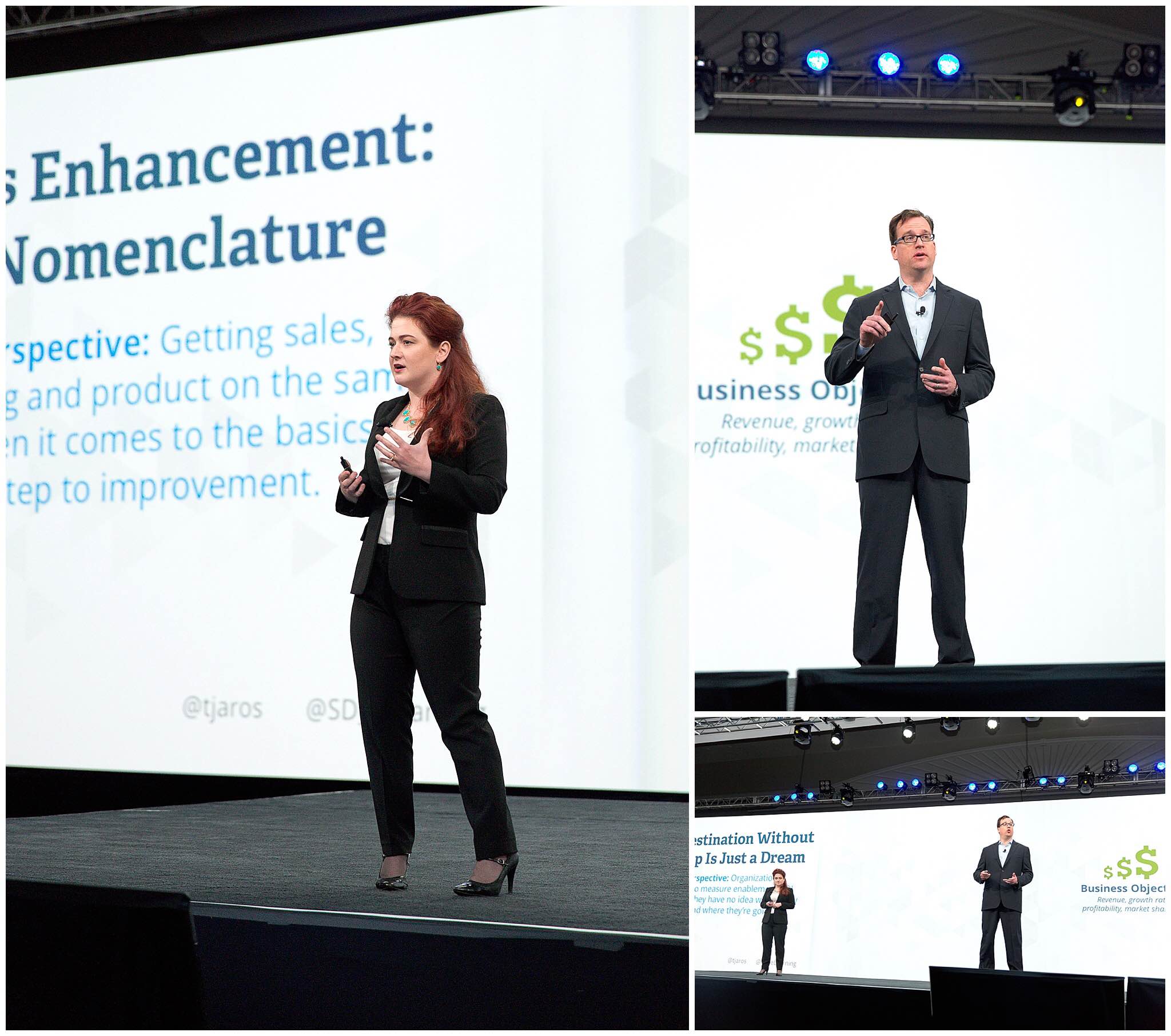SiriusDecisions Summit 2016 Highlights: Why Competency Maps Are Critical
- Many organizations attempt enablement efforts to improve performance, but their programs are haphazard and ineffective
- Consider starting an enablement program by consulting the SiriusDecisions Intelligent Growth Readiness Framework
- Shared skills gaps can be beneficial, as they allow the organization to enable functions jointly
There’s no shortage of enablement efforts in B2B organizations today. With the rise of new technologies and skills requirements across sales, marketing and product, leaders are eager to upskill their teams and reap significant performance improvements.
Unfortunately, the enablement approach that most organizations take is akin to expecting teams to leap across a ravine and land safely on a map that immediately directs everyone to the treasure chest. In other words, these haphazard, theoretical, unmeasured enablement efforts have a one-in-a-million chance of succeeding, explained Tony Jaros and Amanda Jensen during their keynote presentation today at SiriusDecisions Summit 2016.
“A connection between enablement and competency must exist, and the best way to frame it is through competency maps,” Amanda said. While developing these maps might initially appear to be difficult or time-consuming, the activity can be broken down into easily manageable steps. Moreover, SiriusDecisions has found that it is imperative for improving teams’ effectiveness – and ultimately reaching corporate growth goals.

Although approximately 25 percent of B2B organizations currently have sales competency maps, the number drops precipitously for marketing and product teams. Worse yet, fewer than 5 percent of organizations regularly update their competency maps. Given the current pace of change in growth strategies, these maps rapidly become outdated.
So, you’re ready to build a new or refreshed competency map? Start at the top, Tony recommended.
“If you map from the bottom up, you’ll find that individuals or role leaders might not have the necessary visibility into the growth strategy of the organization or how functions should support – or not support – the ability to meet goals,” he said. “You’re leaving judgment to the individual as to what they think they need to succeed, and there will be missing areas.”
Through the preferred top-down approach to competency mapping – from organizations to functions, sub-functions, roles and individuals – organizations can develop a Table of Functional Competency. This chart, which resembles the Periodic Table of Elements, captures the knowledge, skills, tools and processes that each individual requires to succeed in his or her role.
Consider starting by consulting the SiriusDecisions Intelligent Growth Readiness Framework. “This framework is essentially a gut check on alignment between marketing, product and sales leaders right after you all received your strategic goals,” Amanda explained. “In this case, do the leaders agree that the competencies required to grow in the stated fashion exist in the organization?”
From there, business goals must be translated into specific, actionable functional goals, and then leaders should identify shared required competencies across functions. “Getting everyone on the same page, using the same language and sharing the same set of competencies is critical, and it’s also energizing to your teams,” Amanda noted.
At this point, role- and individual-level mapping and comparing can be completed. Avoid “overenabling” – listing unneeded extra competencies that could distract individuals from core goals, Tony and Amanda warned.
Once the competency maps are built and gap analysis has been completed to identify where enablement should be applied, organizations may notice commonalities across functions. Shared gaps can be beneficial, as they allow the organization to enable functions jointly, saving time and money and increasing alignment through the shared enablement experience.
Finally, competency mapping shouldn’t be a secretive exercise. After all, enablement is designed to guide employees over a helpfully placed bridge to improved skills rather than leave them dangling over that dangerous ravine.
“A table of competency that is shared with employees builds a culture of transparency, letting employees know exactly what is required of them, what gaps they might have, and how the company is going to help fill them,” Tony said.